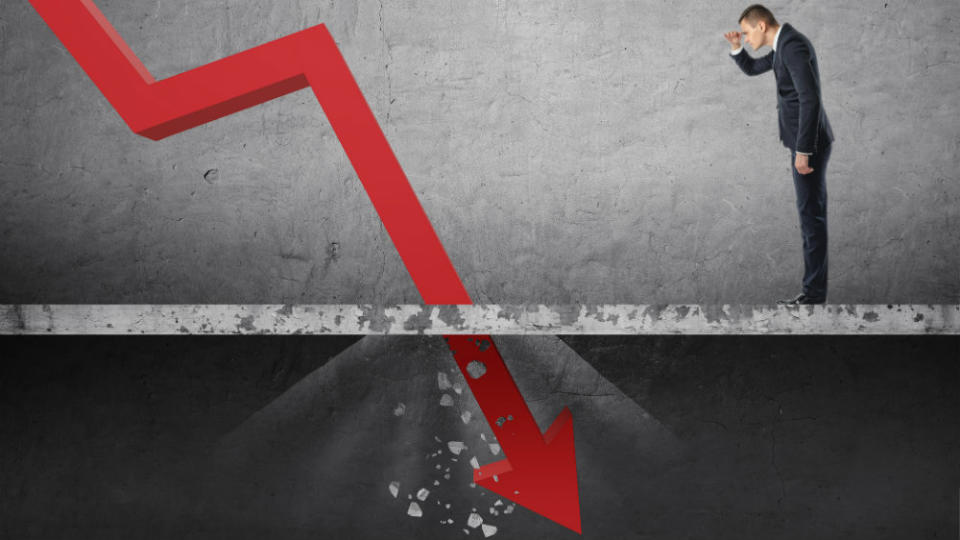Why Did goeasy Stock Nosedive 18% in 2 Days?

Written by Puja Tayal at The Motley Fool Canada
While banks are increasing their lending rates, nonprime lenders like goeasy (TSX:GSY) might have to reduce the interest rates on high-risk loans. The Government of Canada, in its 2023 Federal budget, intends to reduce the maximum allowable interest rate to 35%. This proposal could limit the interest nonprime lenders charge their customers with weak credit scores.
Why did goeasy stock nosedive 18%?
The banking industry has warned of rising credit risk, with the big six Canadian banks increasing provisions for credit losses and capital ratios against risky assets.
The U.S. banking crisis has pulled goeasy stock down 9% since March 8, and the 35% maximum annual percentage rate (APR) proposal added to the bearishness. As a leading nonprime lender, goeasy stock nosedived 18% in the last two days amid investor panic.
How will the budget proposal impact goeasy’s operations? Can goeasy absorb the proposed change without a significant impact on its bottom line? Are investors overreacting? Let’s dive into goeasy’s fundamentals.
How will the 35% maximum APR impact nonprime lenders?
In its update on the 35% APR proposal, goeasy stated that the industry has been giving loans to over 8 million nonprime Canadian consumers, helping them improve their credit profiles. The lenders charge a higher APR based on the credit risk of the consumer. The proposed 35% APR will reduce the customer base of nonprime lenders and push millions of borrowers to more expensive borrowing options like payday loans.
What about the existing loans with an APR of above 35%? Any new legislation occurs on a prospective basis, meaning the current and future loans follow the new regime. Details are yet to be released of which loans will be impacted.
Impact of 35% maximum APR on goeasy’s earnings
Over its 31-year history, goeasy has improved the credit profile of 60% of its customers. In the last five years, it reduced its weighted average interest rate charged to customers from over 46% to 30.5%, below the maximum APR. On February 28 2023, goeasy’s weighted average interest rate on new loan originations was ~30%. All these figures show that goeasy’s new loans comply with the 35% APR.
But 36% of goeasy’s current loan book has an interest rate of more than 35%. If the government implements this rule on the current loan book, goeasy’s weighted average interest rate could reduce by 2.7%. The company could reduce its 2023 guidance for a total yield on consumer loans to below 35% from 34.5%–36.5%.
But looking on the contrarian side, the 35% maximum APR will significantly impact smaller lenders operating at higher average interest rates. It could reduce competition for goeasy, which has the benefit of large scale and better interest rates.
goeasy’s long-term growth outlook
goeasy’s two main sources of income are loan processing fees and net interest income. Its largest expense is the net charge-off rate (the percentage of loans likely to default). At the end of 2022, goeasy maintained a lower charge-off rate of 9.1%, below the pre-pandemic range of 12.7%–13.6%.
goeasy is looking to grow its loan receivables from $2.8 billion in 2022 to $4.9 billion by 2025 by diversifying its offerings. It is expanding in the area of auto financing and in-store kiosks.
Are investors overreacting?
While the 35% maximum APR might impact goeasy’s short-term earnings, the impact will fade as the company diversifies its loan books. An 18% dip has put goeasy stock at its pandemic price level of ~$91.
Investors are overreacting to the government proposal when the stock market is already in a bearish momentum because of the U.S. banking crisis. Banks’ long-term mortgages will feel the impact of high-interest rates when they renew. But goeasy’s short-term loans have already felt the pinch of rising rates. Thus, goeasy stock fell 20% between March and December 2022.
Investors have already priced in the credit and interest rate risk. Now is a good time to buy and hold the stock for the next five years. goeasy has the potential to ride the recovery rally when the economy improves while giving you a dividend yield of over 4%.
The post Why Did goeasy Stock Nosedive 18% in 2 Days? appeared first on The Motley Fool Canada.
Free Dividend Stock Pick: 7.9% Yield and Monthly Payments
Canada’s inflation rate has skyrocketed to 6.9%, meaning you’re effectively losing money by investing in a GIC, or worse, leaving your money in a so-called “high interest” savings account.
That’s why we’re alerting investors to a high-yield Canadian dividend stock that looks ridiculously cheap right now. Not only does it yield a whopping 7.9%, but it pays monthly!
Here’s the best part: We’re giving this dividend pick away for FREE today.
Claim your free dividend stock pick * Percentages as of 11/29/22
More reading
Brookfield Asset Management Spin-Off: What Investors Need to Know
Passive Income: 4 Safe Dividend Stocks to Own for the Next 10 Years
Fool contributor Puja Tayal has no position in any of the stocks mentioned. The Motley Fool has no position in any of the stocks mentioned. The Motley Fool has a disclosure policy.
2023

 Yahoo Finance
Yahoo Finance 